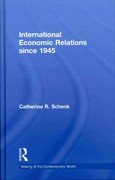Question
Consider a labour market for physical labour where the number of full-time workers (inverse) demand per month by a firm is: w = 50 1/4
Consider a labour market for physical labour where the number of full-time workers (inverse) demand per month by a firm is: w = 50 1/4 L D where w is the hourly wage rate and L D is the number of full-time workers the firm demands in a month. Use this information to answer the following questions:
Suppose the going wage rate in the market is w = 45, how many workers would be hired? If the price of the good being sold is $5, how much output does the last worker hired produce (at least theoretically)?
Suppose the firm is in an area where the overall (inverse) supply of workers willing to work full-time is: w = 2 + 1 8 L S What is the equilibrium wage rate and number of workers hired? What is the benefit to workers (hint: calculate the value of the surplus captured by the workers)?
Suppose the government charges firm a tax that is equivalent to $3 per hour for full-time workers (suppose the tax is used to run employment insurance and worker's compensation programs). What is the new number of full-time workers hired? What is the wage workers get? What is the wage paid? Explain what the price wedge means here. How large is the Deadweight Loss from the tax?
continue to use labour supply from part (b). Suppose the price of the good in the market is $100, but the government feels this limits people's access to the market and sets a price ceiling of $50. In other words, the price is cut in half and results in the firm's (inverse) demand function being
Step by Step Solution
There are 3 Steps involved in it
Step: 1

Get Instant Access to Expert-Tailored Solutions
See step-by-step solutions with expert insights and AI powered tools for academic success
Step: 2

Step: 3

Ace Your Homework with AI
Get the answers you need in no time with our AI-driven, step-by-step assistance
Get Started


